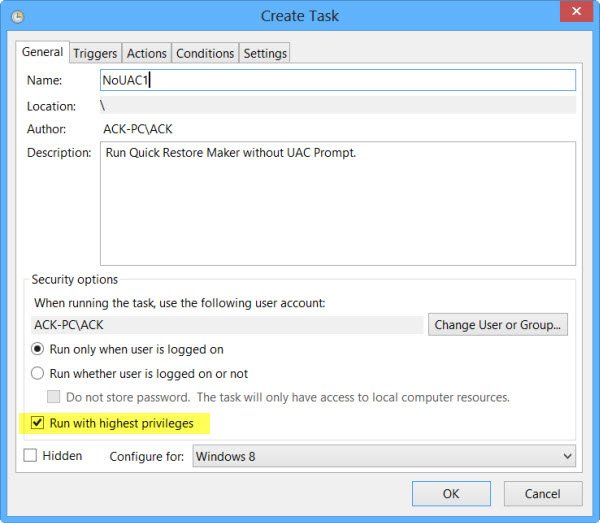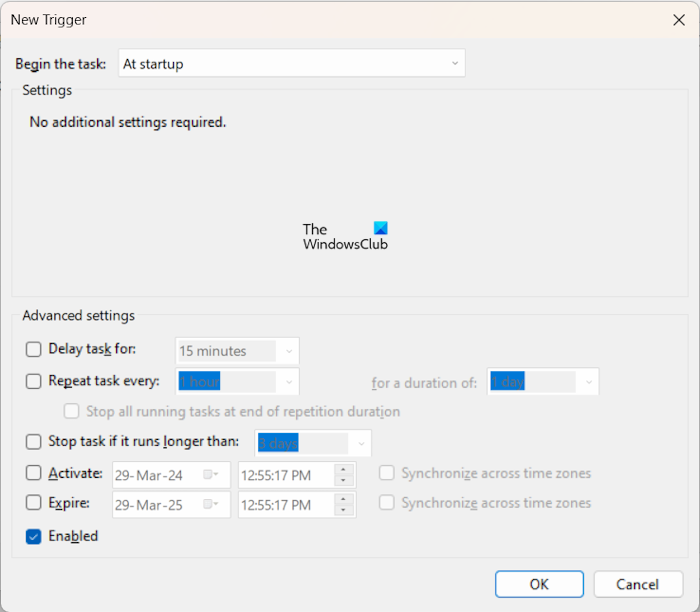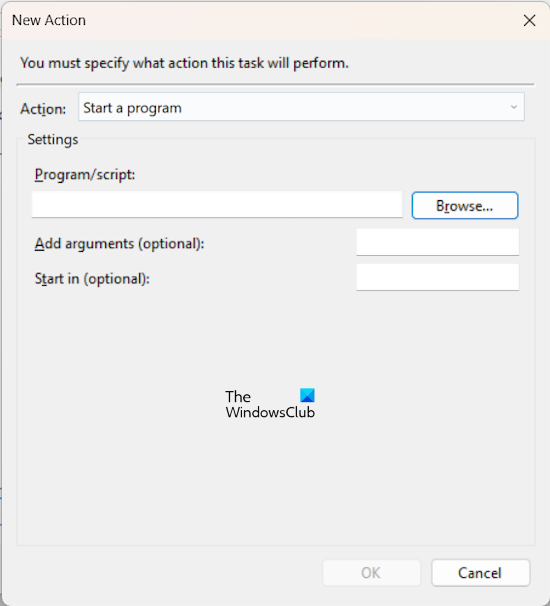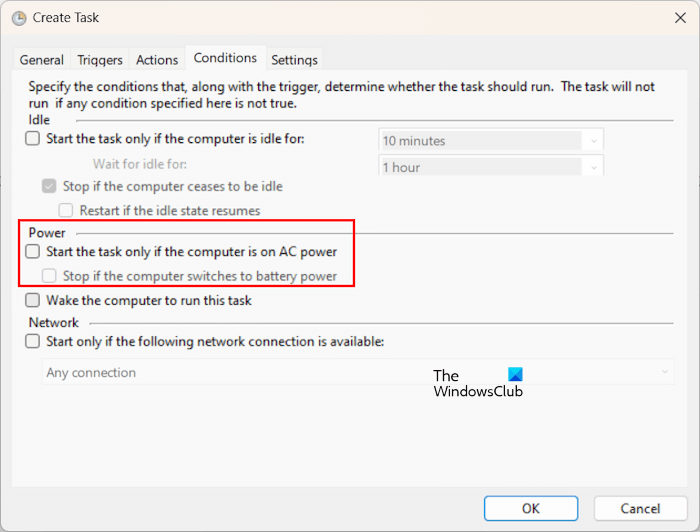We know how you can make programs run on startup and how you can make a program always Run as Administrator. Today, in this post we will see how you can autostart Programs as an administrator in Windows 11/10; that means the selected programs will start on every Windows boot with elevated privileges.

This trick is useful for the users who launch some programs with administrator rights on every system startup. Now, Task Scheduler will do this work for you and you need not run every required program as an administrator every time you start your system.
Auto start Programs as Administrator without UAC prompt in Windows 11/10
To run a program as an administrator, right-click on it and select the Run as administrator option. You have to do this manually. What if you want to auto start programs as administrators without the UAC prompt in Windows 11/10?

Creating a Program Shortcut, opening its Properties, opening the Compatibility tab, checking Run this program as an administrator and placing this shortcut in the Windows Startup folder does not work. What you will have to do, is make use of the Windows Task Scheduler to create an elevated Shortcut to run Programs bypassing the UAC Prompt.
So let us see how to make programs always run or auto start as administrator, with elevated privileges.
To begin with this, type Schedule Tasks in Start Search and hit Enter to open the Task Scheduler.
Under the General tab, give the Task a name, say NoUAC1, complete the other fields as required, and make sure that you check the Run with highest privileges box.

Configure the setting under the Triggers, Action, Conditions & Settings tab according to your preferences. Under Triggers, you can set it to run when the computer starts every time. To do so, click on the Triggers tab, then click on the New button on the bottom left side. Now, select At startup in the Begin the task drop-down menu.

Now, configure the Actions tab. Here, click on the New button available on the bottom left side, then select Start a program in the Action drop-down menu. Now, click on the Browse button and select the exe file of the program that you want to run with administrative privileges on your system startup.
Now, configure the Condition Conditions tab. If you are a laptop user, this step is important for you. In the Conditions tab, uncheck the following two checkboxes:

- Start the task only if the computer is on AC power
- Stop if the computer switches to battery power
If you do not disable the two above-mentioned options, the scheduled task will only run when your computer is plugged in and charging.
You can read complete details about this in our post on how to create an elevated Shortcut to run a Program bypassing the UAC Prompt.
Once you have set up this task successfully, you will find that the program will start automatically with administrative privileges, every time your Windows PC boots.
You can also use freeware like UAC Trust Shortcut and Elevated Shortcuts to make things easier for you. If you create shortcuts using these tools, you need to simply place the shortcuts in the Startup folder.
TIP: To launch a program or app elevated, Hold CTRL+SHIFT and then click on the app icon. The program will launch as an administrator.
I hope you can get this working for you. Additional inputs are, as usual, most welcome!
How do I allow a program to Run as administrator without prompt in Windows 11?
Windows 11/10 always shows the UAC prompt whenever a program tries to launch with administrative privileges. This UAC prompt prevents programs from automatically launching with administrative privileges. Windows also displays this prompt even if you launch an app as an administrator. If you do not want Windows 11 to play this prompt, you can disable the UAC prompt. We never suggest you disable this UAC prompt, as doing this will make your system vulnerable to threats.
How do I run Command Prompt as administrator?
Running the Command Prompt as an is easy. Click on Windows Search and type cmd. Now, right-click on the Command Prompt in the search results, and select the Run as administrator option. Click Yes in the UAC prompt. Similarly, you can launch any program on your system as an administrator.
This post will help you if Run as administrator is not working.
It’s not working for me.
Just setting up the task at the task scheduler didn’t work for me. What did work was adding a shortcut at Windows startup folder (i.e., at C:ProgramDataMicrosoftWindowsStart MenuProgramsStartUp) pointing to that task (a shortcut with the destination: C:WindowsSystem32schtasks.exe /run /TN “TheNameOfMyTask”)